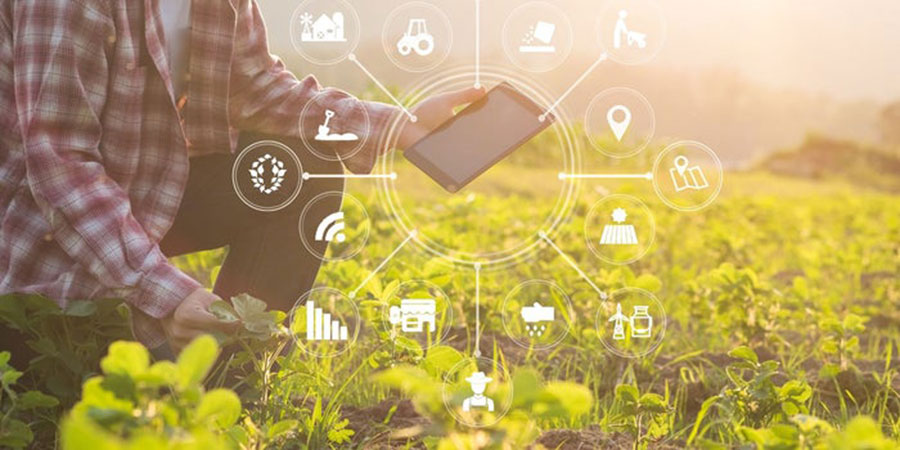Agriculture has played a major role in the birth and expansion of human civilisation for tens of thousands of years. With each millennium that passes, humans have found new and innovative ways to further develop the process of farming, harvesting and livestock domesticating in order to achieve maximum output for the continuous survival of their kin. This principle is in no way any different from what we are currently facing now in the digital era, albeit with a little help from 21st century technology.
The utilisation of technology in the development of modern-day agriculture is known as “agritech” - now a widely circulated buzzword within tech and start-up communities looking for more sustainable, renewable and cost-effective ways to support the ever growing global population. More specifically, agritech helps farmers maximise yields and efficacy using comprehensive data analytics, artificial intelligence and robotics. In addition to agriculture, horticulture and aquaculture are also included in the categorisation of agritech.
In Southeast Asia, agriculture plays a pivotal role in developing and emerging economies, so it comes as no surprise that this industry contributes to almost half of the rural income in this region alone. Despite a number of regional start-ups successfully making headway in this sector, there exists flagrant inefficiencies in the agricultural value chain that have unfortunately proved almost impossible for the sector to continue moving forward. In this instance, start-ups have turned towards mobile technology to support agribusinesses and come up with a range of solutions to a variety of multifaceted business challenges.
One example is Cambodia-based Agribuddy, launched at the end of 2016 with the tagline “Changing agriculture in Cambodia” and with the goal of building a system that would transform the agricultural sector in the country. They succeeded in doing this within 2 years and even secured more than US$3 million in investment. The concept of Agribuddy employs a “buddy” network system that connects smallholder farmers and enables them to share information about their farms and themselves to build a credit scoring profile, which will then provide them with access to loans and credits. “We have thousands of farmers, hundreds of suppliers, Buddies, banks, and we have to talk to them one by one, it’s very very tough,” said Pakk Yourng, managing director of Agribuddy Cambodia.
In Vietnam, agritech start-up MimosaTek uses an IoT platform to provide data, support decision-making and remotely control farming using sensors on agricultural equipment and a cloud platform. Founded in 2014 by a group of young visionaries who were passionate about creating a positive impact in their society, MimosaTek has garnered a number of impressive accolades since its conception, including winning the IDG Ventures and Samsung-backed Go Live! Vietnam Venture Cup contest in Ho Chi Minh City in 2015 and becoming the first Vietnamese organisation to win the Securing Water for Food Challenge in 2017.
Co-founder and strategy director for MimosaTek, Nam Dang said, “Agriculture in Vietnam is super inefficient. Productivity is among the lowest in Asia. Waste is everywhere — more than 50% of water is wasted as a result of over-irrigation, up to 60% of the fertilizer is not absorbed by the crops which run off and destroy the environment, 20%-30% of the crops are lost due to pests and diseases, and over $700 million are lost in export opportunity because of overusing pesticides and chemicals. All of this is caused by the fact that farmers do not have data about the demands and health conditions of the crops, and therefore cannot tailor their services to meet their needs.”
He added that Vietnam welcomes innovators from all over the world to come and help solve the country’s agricultural issues. “We believe in the potential of agriculture technology market and trust that local start-ups will lead the change.”
In terms of aquaculture, Indonesia’s eFishery integrates a sensory feeding device to measure the animal’s food intake in fish and shrimp farms in order to avoid overfeeding which would lead to excessive water pollution. Using IoT, eFishery’s farmers manage their ponds more efficiently and from anywhere in the country with just a click of their smartphone. In 2018, eFishery managed to raise US$4 million in funding from institutional investors like Aqua-spark, Wavemaker Partners and Maloekoe Ventures, just to name a few.
“Ultimately, with this new round of investment, we want to further scale and refine our operating model. We aim to be a platform that connects the entire ecosystem in fish and shrimp farming, creating a more accountable and profitable industry across the region,” explained eFishery co-founder and CEO Gibran Huzaifah.
Even with all this cutting-edge technology, why is it still necessary to care about agritech? Firstly, agritech allows for the growing of food in urban areas and in a myriad of climates, instead of miles and miles away in a giant field which is out of reach and out of sight, that in turn allows for decreased hassle in transporting these goods to different parts of the country. The closer the food is to your home, the fresher and better it tastes. Secondly, the use of agricultural technology also mitigates the need for pesticides or chemical fertilisers that could potentially manipulate the nutrients in the soil and cause health problems in humans. Therefore, the proper use of agritech could, in the long run, assist in the promotion of healthier food and a sustainable environment.
By Shalini Julia John






